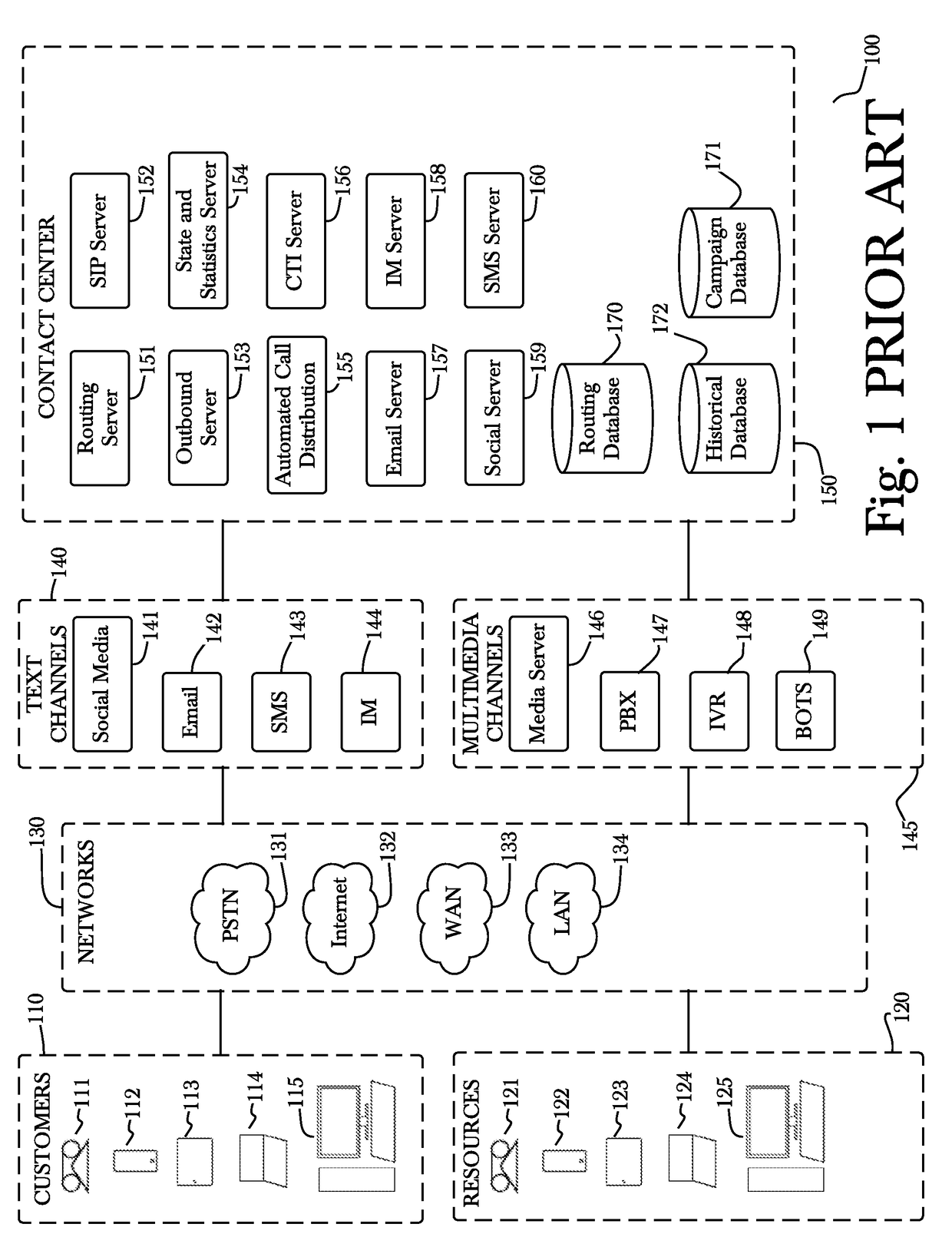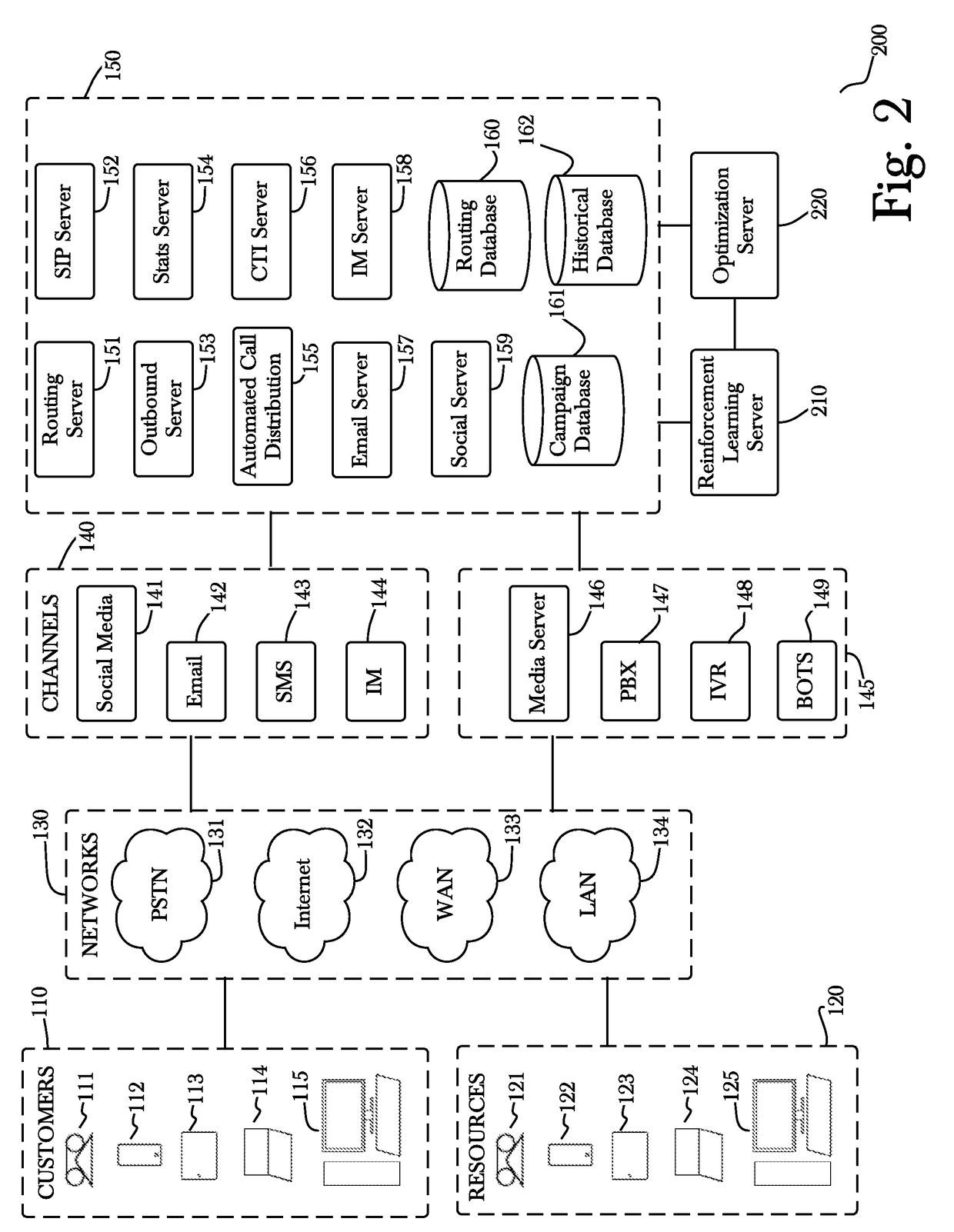Contact centers are home to some of the more complex business processes engaged in by enterprises, since the process is typically carried out not only by employees or agents of the enterprise “running” the contact center, but also by the customers of the enterprise.
The existence of multiple competing or at least non-aligned stakeholders jointly carrying out a process means that, even when great effort is expended to design an efficient process, what actually occurs is usually a dynamic, surprising, and intrinsically complex mix of good and bad sub-processes, many of which occur without the direction or even knowledge of an enterprise's customer care management team.
However, in the art most skills are assigned administratively (sometimes based on training completed, but often based on
work assignment or
workgroup policies), and do not reflect actual capabilities of agents.
This common practice in the art further erodes any connection between skills as assigned and actual capabilities of agents, and in general basic skills-based routing has been unable to
handle the complex needs of larger contact centers.
This approach, while attractive on the surface, is very impractical.
But this approach suffers from the
disadvantage that it is very complex, and requires a high degree of technical skill on the part of the routing strategy designer.
This requirement for skilled designers also generally means that changes in routing strategies occur only rarely, generally as part of a major
technology implementation project (thus agile adoption and
adaptation of enhanced business rules is not really an option).
Another general issue with the state of the art in routing is that, in general, one routing engine is used to
handle all the routing for a given agent
population.
This means that the routing engine has to be made very efficient so that it can
handle the scale of computation needed for large complex routing problems, and it means that the routing engine may be a point of failure (although hot standby and other fault-tolerant techniques are commonly used in the art).
Also, routing engines, automated call distributors (ACDs), and queuing and routing systems in general known in the art today generally limit themselves to considering “available” agents (for example, those who have manually or automatically been placed in a “READY” status).
In large routing systems, having to maintain continuous real-time state information about a large number of agents, and having to process routing rules within a centralized routing engine, have tended to require very complex systems that are difficult to implement, configure, and maintain.
Many contact centers include a platform with rich APIs that enable custom application development, so the distinction between cloud-based contact centers and communications platforms is not always strong.
However, use of these contact centers and communication platforms requires
human interaction and management of complex communication processes such as ‘process and state tracking’, ‘uncertainty’, ‘hidden states’, ‘actions and actors’, ‘determination of actions leading to optimal outcomes’, ‘rewards and costs’, and ‘constraint propagation’.
Even when great effort is expended to design an efficient process, what actually occurs is usually a dynamic, surprising, and intrinsically complex mix of good and bad sub-processes, many of which occur without the direction or even knowledge of an enterprise's customer care management team.
However, the custom process, and the states or stages in the process, need to be regularly defined and managed by the developer, which is a taxing and time-consuming process.
Real-world communications scenarios are complex and involve large degrees of ‘uncertainty’.
For example, from the simple fact that there are humans sending and responding to communications, there is uncertainty about knowing when interactions (voice, message, video) will start or terminate and what particular communications choices will be made on which particular channels.
Also, as high quality intelligent speaking assistants and text bots become more prevalent it may become increasingly hard to know whether one party in communication is a human or a
machine and thus the state of whether that party is a human or
machine is no longer easily
observable.
A key challenge when faced with a large number of choices between possible actions is which specific actions should be taken under differing situations (and in what sequence) in order to achieve the best outcome over time.
In the case of constraint propagation, quite complex constraints need to be imposed on the allowed domains of integer decision variables.
Whilst a model may be created to be used as basis for some or all
system processes, the act of selecting the appropriate model for the given parameters, as well as conditioning the model is quite complex.
However, in-sampling typically draws an overly simplistic
scenario of the model's forecasting ability, since commonly chosen algorithms usually are assigned to avoid large prediction errors, and are therefore, susceptible to error when used in the long-run.
The use of out-of-sampling is iterative and
time consuming, and results must be evaluated and further applied to another model to be tested for the desired outcome, which by that time, the desired outcome may have changed based on ever-changing conditions associated with call centers, as explained above.
 Login to View More
Login to View More  Login to View More
Login to View More 


